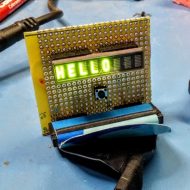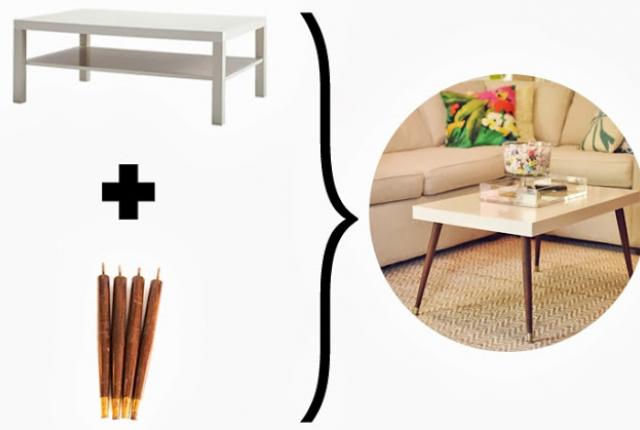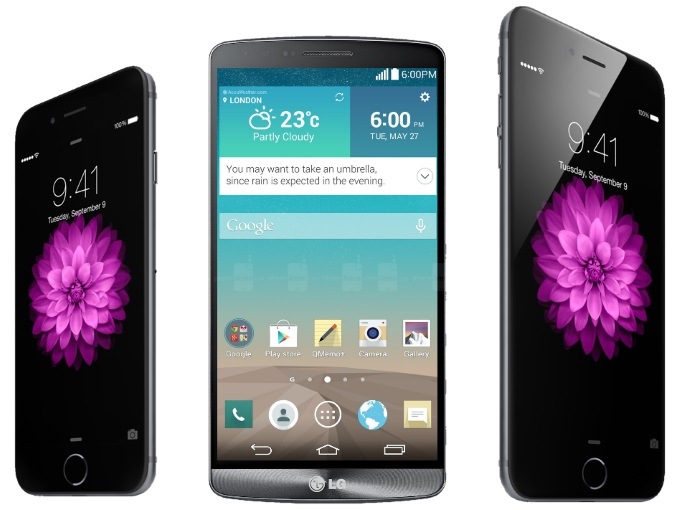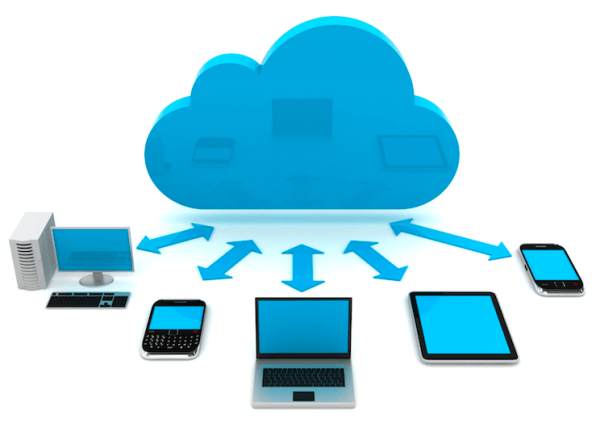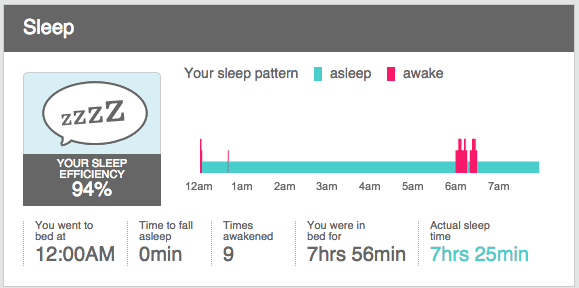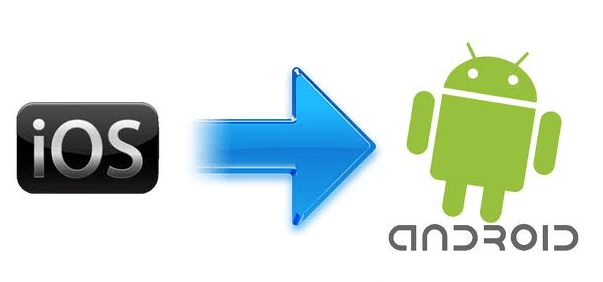I’ve loved the irrational number set for most of my life. There’s something magical about numbers that have no finite limit. Pi is one of those.
The intersection of IKEA and hacking
I heard a really fascinating episode of one of my favorite podcasts recently (99% Invisible). It was about hacking IKEA furniture. They interviewed the curator of a website devoted to the niche art form.
The economics of urban chicken ranching
My wife had a dream of raising chickens and she made it a reality. It wasn’t something I was extremely eager to get into at first. But I have to admit that they are fun, curious little creatures.
From iOS to Android, part 2: ecosystem shock
Last time, I talked about two key aspects of technology that tend to make loyal customers: platform ecosystem and user experience.
It was a natural transition from owning Macs for the better part of a decade to iPods and then finally iPhones. Apple has done well to keep the user experience very fairly consistent between all the platforms. That is probably their single greatest contribution to the technology world: coherent ecosystem. In other words, the way you work on a Mac tends to be naturally the way you would work on an iPhone. And that’s a good feature. It makes for loyal customers.
So why, then, did I jump ship?
Continue reading “From iOS to Android, part 2: ecosystem shock”
online IDEs
I love IDEOne. It’s a fully debuggable online compiler for a bunch of software languages. And there’s no need installing a plugin to format source code correctly on my blog, when this service offers embeddable links. Like this:
By the way, this isn’t compiling. Anyone have any pointers? See what I did there? Pointers?
The collision of Boxes
I’m a big fan of Dropbox. I (and the rest of the internet) have been using it in free mode for quite some time. I probably don’t need to tell you what it is 1. What I particularly love about the cloud is that it kills two birds with one stone:
- Syncing your files painlessly between all your devices (computers, phones, tablets)
- In the process, giving you easy backup (by way of mirroring your data across multiple personal devices, as well as in the cloud)
And as the cloud storage market gets more crowded (Box.com, Microsoft’s OneDrive, Google’s Drive, Apple’s iCloud, etc.), the race to $0 makes for a pro-consumer landscape.
Bearable wearable
I’ve always loved following tech. The emergence of the wearables market has been a fascinating one: a convergence of small form factor, low power, and high performance electronics. In particular, this market really couldn’t have happened without the smartphone industry blazing the trail, since wearables leverage multiple technologies like touch screens, accelerometers, compasses, and wireless interfaces.
And yet, I’ve been pretty reluctant to actually buy a wearable. I’m a late adopter. I’m also fairly inundated with enough tech already. So having another device to sync, charge, socially link, and generally pay attention to, wasn’t a prospect I was eager to jump into.
Along comes Fitbit 1. As cool as this thing is, I can’t take credit for becoming a user. It was thrust onto me. Forsooth, it was a gift. But such a good one!
For all the other tardy adopters out there, allow me to fill you in: Fitbit is basically a pedometer. A really fancy one. It’s also a watch, a silent alarm, and a general purpose fitness tracker. In fact, they call the watch-like wearable a “tracker.”
So what about this specific product made me change my mind about the market in general?
Form factor
I like that the Fitbit line of products are smaller than the smart watches. I like its sleekness and space-aged contour.
Competition
The Fitbit works really well since it is a social device. You can view your friends’ progress, which naturally engenders competition.
Meaningful Metrics
Take a look at the kind of data you can glean from it:
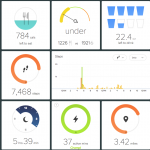
For people like me that like to quantize as much of their lives as possible, this device is very addicting! In particular, the sleep efficiency data is worth the price tag alone. I’ve had sleep issues in the past, and seeing my slumber numbers in vivid detail somehow helps me cope.
Silent Alarm
Dovetailing with the above, someone like me whose sleep hygiene isn’t the best can have difficult time rousing to an alarm. But traditional alarms, being by nature audible, have collateral consequences to our partners in bed. My wife has had very early and tandem wakeup times, since I get up quite early for work.
But no more! The Fitbit has a vibration motor in its tiny little body. And affixed to my wrist is the ideal place to wake me from deep sleep. It’s almost uncanny how transformative this has been to both my waking problems and her sleep quality in the mornings.
In fact, I’m so excited about its alarm feature, I’m half tempted to pull the trigger on this sleep experiment: Polyphasic cycles. Well, one thing at a time. First, 10,000 steps per day, then sleep hacking.
From iOS to Android, part 1
You read that right. I’ve made the switch. Got rid of my iPhone(s) and careened over into Android territory. And so far, the grass is still pretty green over here.
Inaugural Maker Faire
Well, I’ve officially joined the DIY electronics community. Last week, I attended my first Maker Faire. It was my city’s first ever, and I was determined to take one of my projects as a booth participant. Nothing like a deadline to get my hind quarters into gear and (kind of) finish a project!
The state of the Arduino ecosystem
*** The following is a “bitter old engineer” rant. You’ve been warned.
At this ripe old age, I have come to value most the quality of a toolchain. I’ll go a step further and say that the coherency and consistency of the umbrella that toolchain inhabits is a most prized quality. And what spurred this revelation? Why the obtuse declaration?
I have seen the other side, brothers and sisters. I have felt the greener grass on the knoll of Arduino, and I’m here to tell you something: it ain’t that green.
My (albeit, limited) experience to date in hacker-friendly Arduino land has been lackluster. It reminds me of another favorite rant of mine: Linux. There are some striking similarities between the two communities of DIY hobbyists and computer enthusiasts.
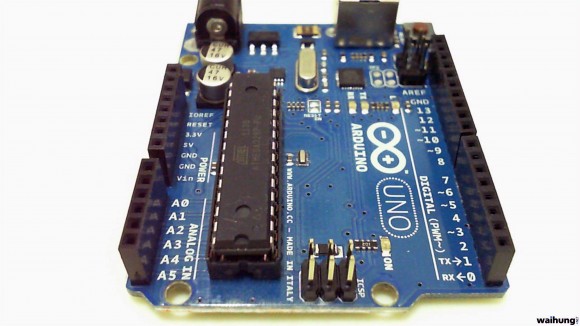
- As soon as something “official” releases, there are half a dozen “forks” that have splintered off. This serves to dilute the overall user experience, causing bewilderment and disorganization.
- As a result, newer users aren’t sure where to start to get things up and running.
- Knowing where to turn for help is equally difficult. Because the dragon has a dozen heads, you might have to slay them all before you master the thing.
I have on my work bench a handful of Arduino-esque stuff, virtually all of it non-operational hardware (so far):
a) A Pololu AVR programmer
b) A Sparkfun Pocket AVR Programmer
c) A homemade ISP programmer
d) An Arduino UNO
e) A relay development board with ATtiny2313 MCU
a)
This was a replacement for (b), promising to be more better faster. At least this manufacturer’s drivers are self-hosted, i.e., they make their own suite of drivers. It’s not some arcane foreign package, managed by yet another third party, long defunct. And yet… damned if the thing won’t work. I get the dreaded Exclamation Point of Death.
b)
This is a hopeless mess. Sparkfun’s driver link just goes nowhere. After a half an hour of reading and clicking, I stumble over to another vendor’s site and find some hearsay about yet another suite of drivers that allegedly work. Finally this installs, but there’s no COMM port listed in Device Manager. So, none of the software tools can recognized the thing.
c)
I was foolhardy to think I could make my own programmer from scant directions on the interwebz. That was just a big fail.
d)
My first Arduino dev board, the Uno, does not work. I plug it in, and most of the time no machine will recognize it. No “bonk”, no “ding”, nothing. I took this to my office and gave it to my technicians who are well accustomed to working with QC and microscopes and fancy solder reflow equipment. They found nothing distinctly wrong with it. And yet it clearly doesn’t work.
I found that if I bend the Uno board a bit (yes, bend), I can get Windows Device Manager to wiggle a bit. So there appears to be an inner layer fault, most likely a trace intermittence. Lovely. Another brick for my pile.
e)
To program the AVR chip, I turned to these sprinkling of software tools that purport to do so:
- WinAVR
- AVRDude
- AVRDude-GUI
- AVR Studio
The top three have been dudes for me so far. I’m yet to try the gold standard, AVR Studio. After all, this is published by the manufacturer of the MCU…
The only piece of hardware above that I got to work was the relay I/O board. And you know how I did it? With a Freescale HCS08 dev board. Not an AVR chip or an Arduino board. The S family of chips is simply lovely. It’s soothing. It’s a fresher breath of air, having inhaled the stale aroma from the Arduino “hackerspace”.
But to be fair, Freescale is my comfort zone. I cut my teeth on the Motorola HC11. So it stands to reason that I’d favor that flavor.
The uniformity of experience in going from a line of C code to a hex file burned onto silicon is now even more valuable to me. The Freescale “way of doing things” is a much more pleasant thing. One application (CodeWarrior) weighing in at a hefty half gig, published by a single vendor that also happens to design and fab the chip you’re using, is all you need. Start to finish. That’s power.
I should note right here and now that I’m actually the biggest supporter of the Open Hardware Movement and the philosophies that Arduino espouses. There have been countless amazing creations achieved with this platform.
It’s in the implementation that I’m disappointed. Frankly, I’m surprised that the masses aren’t as frustrated as I am. I suspect that this is indicative of a greater public movement: that of DIY culture invading every corner of the marketplace. The software (or tool, or apparatus) doesn’t work as advertised? No sweat, just hack it!
And that ethos truly is something to celebrate. Kudos to the Everyman who fixes something rather than disposes of it, complains, and buys a new one.
But coming from the engineering and product development side of the aisle, I’m forced to side with the philosophies of coherent and esthetically pleasing user experience. This has value too, just as much (I would argue) as the value of DIY, crowd-sourced electronic hobbyism.
